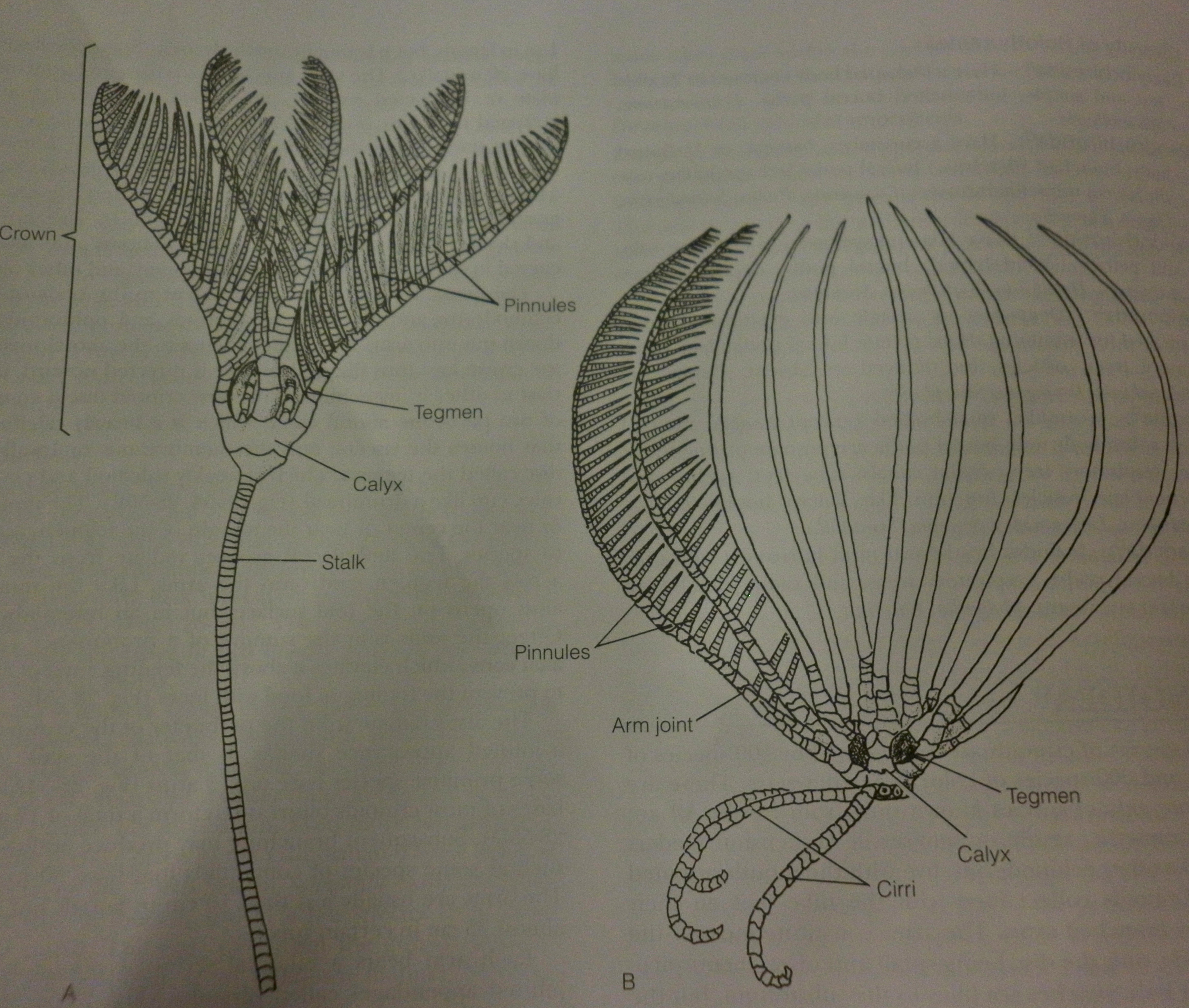Anatomy & Physiology
Form
The Crinoidea class at present as two types of extant forms – stalked and stalk-less (Fig. 1). The stalked individuals have an elongated stem attaches to the bottom of the centro-dorsal plate. The stalk-less individuals are only“stalk-less” in adult form (Messing, 1997, Messing, 2007). They loose their stalk at the end the larval stage (post-larval) (Ruppert et al., 2004).

Figure 1: Illustrated representation of stalked (A) andstalk-less (B) crioinds. Crinoid morphological terminology has been included for ease of understanding. Adapted from Ruppert et al. (2004).
Body Wall and Musculature
Crinoids might not appear to have significant amounts of tissue but they indeed have complex tissues that make up the body wall. The external layer of the body wall is the cuticle. Under the cuticle lies the dermis, which contains the normal dermal layers - epidermis, dermis and basal lamina (Ruppert et al., 2004). Under the dermis the connective tissue can be found in a continual layer (Wilkie, 2005). Each pinnule and arm has its own independent set of muscles that are contracted to extend the appendage in an outwards direction(Ruppert et al., 2004). The nature of the connective tissue means that when they aren’t contracted the appendages take the relaxed position with the arms at rest (fig. 2).
 
Figure 2: A) Extended position of the appendages when connective tissue is contracted. B) Rest position when appendages connective tissue isn’t contracted.
Located within the connective tissues are ossicles that are held together with collagen fibers called ligaments. The ligament penetrates through porous skeletal material to form a semi ridge structure and assist mutable tissue change.
Mutable Tissue
The ability to change state from ridge to soft in less than a second is a defining characteristic of the phylum Echinodermata (Wilkie, 2005). In crinoids the mutable connective tissue allows for predator deterrence. This is achieved by the ability to disassociate the main body from individual arms or radiate of arms. After disassociation from the main body of the appendages continue to twitch as a distraction, while the rest of the organism swims or creeps away (Ruppert et al., 2004).
Water Vascular System (WVS)
Crinoids like all echinoderms have a water vascular system and tube feet. There are two characteristics of the water vascular that differ from other echinoderms. Firstly, crinoids do not have madreporite, instead have multiple pores that penetrate the tegmen (tegmenal pores) into the pervisiceral coelom (Ruppert et al., 2004). Secondly, the ring canal diverges into stone canals. There is one stone canal for each radiate or arm (Ruppert et al., 2004).
|